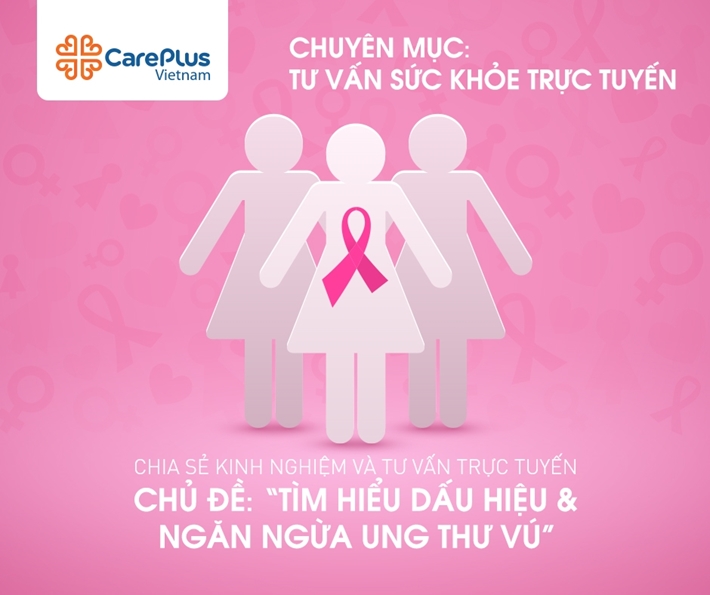Breast cancer – 9 health tips on prevention
Ung thư vú là một trong những nguyên nhân gây tử vong hàng đầu ở nữ. Bệnh thường rất khó nhận biết ở giai đoạn đầu bởi các triệu chứng không rõ ràng.

1/16/2018 2:54:52 PM
Breast cancer begins when a cell in the breast begins to multiply out of control. Over time these cells create a lump that can be felt by hand or noticed via medical diagnostic methods. We only call cancer those malignant tumors where the cells grow into (invade) surrounding tissues or spread (metastasize) to distant areas of the body.
Cells in nearly any part of the body can become cancer, and can spread to other areas of the body. To learn more about how all cancers start and spread, see What Is Cancer?
Breast cancers can start from different parts of the breast. Most breast cancers begin in the ducts that carry milk to the nipple (ductal cancers). Some start in the glands that make breast milk (lobular cancers). There are also other types of breast cancer that are less common. Although many types of breast cancer can cause a lump in the breast, not all do. There are other symptoms of breast cancer you should watch out for and report to your doctor at CarePlus Vietnam. Note that most lumps in the breast are perfectly harmless and we call them benign tumors. Benign breast tumors are abnormal growths, but they do not spread outside of the breast and they are not life threatening. Any breast lump or changes needs to be checked by a medical professional to determine whether it is benign or cancer, and whether it might impact your future cancer risk.
Prevention
1. Keep Weight in Check
Being overweight can increase the risk of many different cancers, including breast cancer, especially after menopause.
2. Be Physically Active
Exercise is as close to a silver bullet for good health as there is, and women who are physically active for at least 30 minutes a day have a lower risk of breast cancer.
3. Eat Your Fruits & Vegetables – and Avoid Too Much Alcohol
Try to eat a lot of fruits and vegetables and keep alcohol at moderate levels or lower (a drink a day or under).
4. Don’t Smoke
Smoking increases the risk of heart disease, stroke, and at least 15 cancers – including breast cancer. Try to live smoke-free.
5. Breastfeed, If Possible
Breastfeeding for a total of one year or more (combined for all children) lowers the risk of breast cancer.
6. Avoid Birth Control Pills, Particularly After Age 35 or If You Smoke
While women are taking birth control pills, they have a slightly increased risk of breast cancer. This risk goes away quickly, after stopping the pill.
7. Avoid Post-Menopausal Hormones
We now know post-menopausal hormones have a mixed effect on health, increasing the risk of some diseases and lowering the risk of others, and both estrogen only hormones and estrogen-plus-progestin hormones increase the risk of breast cancer.
8. Find Out Your Family History
Women with a strong family history of cancer can take special steps to protect themselves, so it’s important for women to know their family history. You may be at high risk of breast cancer if you have a mother or sister who developed breast or ovarian cancer (especially at an early age) or if you have multiple family members who developed breast, ovarian or prostate cancer
9. Don’t Forget Screening
Studies show that breast cancer screening saves lives. It doesn’t help prevent cancer, but it can help find cancer early when it’s most treatable.